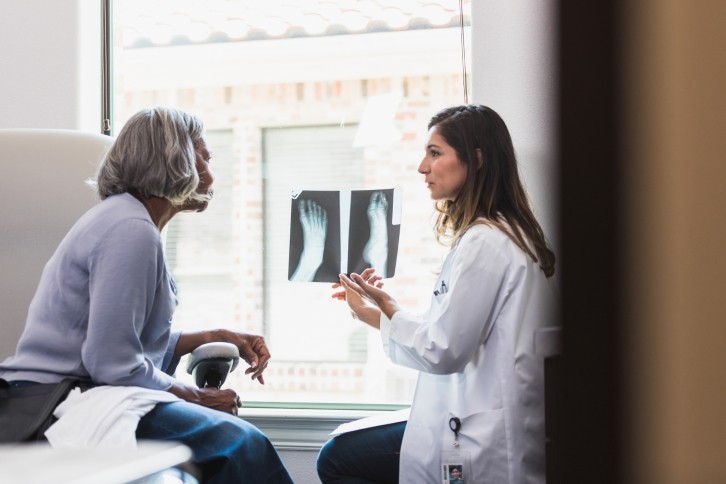'Remarkable' microbiome changes in postmenopausal women with osteoporosis

Osteoporosis is a metabolic bone disease that is characterised by the decreased bone mass per volume-unit.
The incidence of postmenopausal osteoporosis (PMO) is about 57% and there is a close relationship between gut microbiome and bone turnover markers in postmenopausal women.
Numerous studies have explored the association between bone and intestinal flora in animals and humans. Resulting data indicates the gut microbiome of postmenopausal women has an altered community dynamic, with co-presentations of osteoporosis and/or osteopenia diagnoses.
Evidence gathered on the gut microbiota-bone axis suggests the bacterial strain Prevotella histicola is specifically able to prevent oestrogen deficiency-induced bone loss.
A randomised controlled trial revealed that a bioavailable isoflavone and probiotic treatment can improve bone status and oestrogen metabolism in postmenopausal osteopenic women.
Therefore, the current consensus is that gut flora acts as a major regulator of BMD by influencing the immune system. However, the specific mechanisms between gut microbiota, their faecal metabolites, and bone metabolism remains unclear.
The current study, conducted in China, therefore aimed to understand gut microbiota signatures and faecal metabolite changes in postmenopausal women with osteoporosis.
The study
For this study, 108 postmenopausal women recruited for intestinal microbiota and faecal metabolite detection. Among these participants, 98 patients, who met the inclusion criteria, were divided into postmenopausal osteoporosis (PMO) and non-postmenopausal osteoporosis (non-PMO) groups based on bone mineral density (BMD).
The compositions of gut bacteria and fungi were examined by 16 S rRNA gene sequencing and ITS sequencing, respectively. Meanwhile, faecal metabolites were analysed using liquid chromatography coupled with mass spectrometry (LC-MS).
The researchers found that bacterial α-diversity and β-diversity were significantly altered in PMO compared to non-PMO patients.
Interestingly, fungi composition showed larger changes, and the differences in β-diversity were more significant between PMO and non-PMO patients. Metabolomics analysis revealed that faecal metabolites, such as levulinic acid, N-Acetylneuraminic acid, and the corresponding signaling pathways were also changed significantly, especially in the alpha-Linolenic acid metabolism and selenocompound metabolism.
The screened differential bacteria, fungi, and metabolites closely correlated with clinical findings between these two groups, for example, the bacterial genus, Fusobacterium, the fungal genus, Devriesia, and the metabolite, L-pipecolic acid, were significantly associated with BMD.
The authors conclude: "This correlation provides potential directions for exploring the mechanism of PMO development and provides potential early diagnostic indicators for PMO. This study may provide novel interventions to improve the level of bone health in postmenopausal women."
Discussing potential therapeutic opportunities, they note that supplementation with probiotics or a high dietary fibre diet can regulate the distribution of intestinal flora, thereby reducing bone loss caused by oestrogen loss.
They add: "Gut microbiota changes have a significant impact on bone loss. There is growing evidence that connecting microbiome and menopause holds promise for new interventions to alleviate menopausal symptoms and for healthy ageing."
Source: Gut Pathogens
https://doi.org/10.1186/s13099-023-00553-0
"Gut microbiota signatures and fecal metabolites in postmenopausal women with osteoporosis"
Wang, H., Liu, J., Wu, Z. et al.













